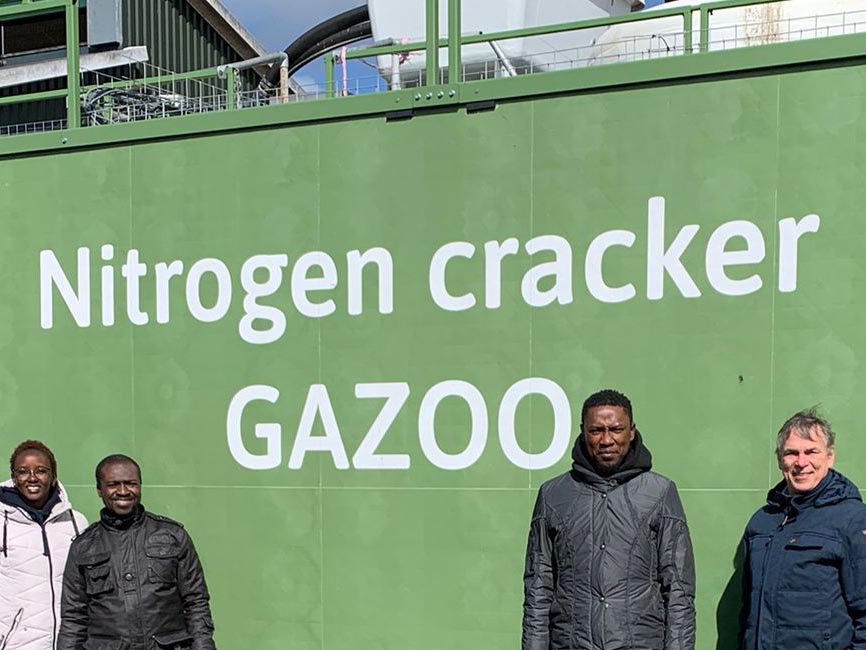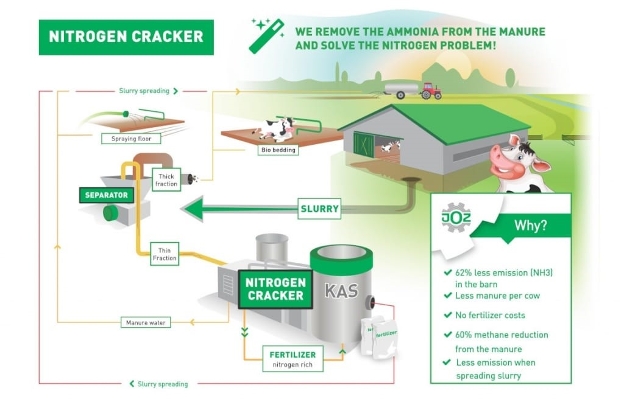Cookies
Van Hall Larenstein treats its customers' information with the utmost care and will never make this information available to third parties. Read more about us Privacy and Cookie Policy

JOZ nitrogen cracker "Gazoo" is a research project of the research group Climate Smart Dairy Value Chains.
Ammonia (NH3) and nitrogen oxides (NOx) are released into the air through emissions. All ammonia and nitrogen oxides emitted by the various sectors (agriculture, traffic, industry) eventually return to the land or water via wet (rain) or dry (gravity) deposition. As a result, soils are enriched (fertilized), causing disruption of biodiversity, in favor of nitrogen-loving plants. About two-thirds of all nitrogen that deposits is NHy (NH3 and NH4+ combined), the remaining third is NOx. Dairy farming is a major source of nitrogen emissions.
Measuring the ammonia and methane emissions reducing effect of the Gazoo nitrogen cracker. The calculated claims must be substantiated by measurements. In the overarching project, measurements are carried out on 7 dairy farms, 5 of which are carried out by VHL. Through the N-cracker, ammonium is extracted from the manure according to the procedure in Figure 1, which reduces emissions to the air. VHL measures: 1. Direct ammonia and methane emissions; 2. Nitrogen concentrations in slurry and all Gazoo products; and 3. Circularity of nitrogen within the farm (feed, livestock, milk, manure, Gazoo products, NH3 emissions).

With the JOZ nitrogen cracker, 60-70% ammonia emissions are reduced at the source, and methane emissions are also reduced to a limited extent. This system makes circular agriculture possible by producing manure fractions that are easier exchangeable with arable farmers and fellow livestock farmers. In addition, the minerals can be better used on the own farm. The revenue model mainly consists of preventing expensive (inefficient) manure disposal and saving on fertilizer costs. And with the necessary emission reductions, unprofitable barn modifications become unnecessary. In addition to the intended barn emissions, ammonia emissions are also reduced by up to 75% during manure application.

Name of professor: Robert Baars
Lecturer-researchers: Esther Kapsoot, Ronald Zom
Project duration: 2023-2025
Project partners: JOZ, DLV, WUR, ILVO (Belgium), 7 dairy farms
SDGs: 13 and 15
